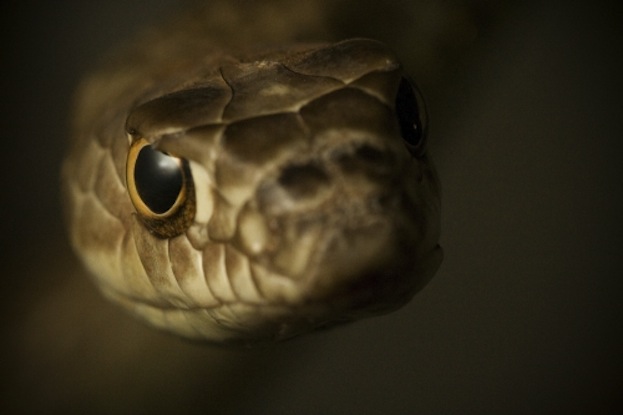Snakes Control Blood Flow to Boost Vision

Snakes have infamously poor eyesight, which is why they resort to sticking out their tongues all the time to get a sense of their surroundings. But the creatures may have a way to improve their vision in a pinch.
At least for one snake species, when the slitherer feels threatened, it controls the blood flow to its eyes to ensure that its sight is unobstructed, a new study found.
The research focused on the coachwhip snake (Masticophis flagellum), a thin, nonvenomous species that is found across the United States and Mexico and can range in color from brown to pink.
Like all other snakes and many other reptiles, coachwhip snakes don't have eyelids but rather a transparent scale called a spectacle that covers and protects the eye.
While examining the eye of a coachwhip snake, study researcher Kevin van Doorn, of the University of Waterloo in Canada, said he noticed a network of blood vessels in this see-through layer of skin.
Van Doran further investigated this feature. He found that the blood vessels constricted and expanded in a consistent cycle while the snakes were resting so that blood cells wouldn't pool up in front of the animals' eyes and obscure their already limited vision.
But faced with a threat (in this case, a human approaching their terrarium), the snakes abandoned this rhythm. They constricted these vessels, reducing blood flow for up to several minutes and ensuring topnotch visual clarity in case they needed to defend themselves or flee from a predator, the researchers said. The opposite was true as the snakes were shedding their skin; the spectacle vessels remained dilated, keeping the blood flow continuous, which probably supports cell growth as the snake renews the outer layer of its skin, according to the study.
Sign up for the Live Science daily newsletter now
Get the world’s most fascinating discoveries delivered straight to your inbox.
"This work shows that the blood flow pattern in the snake spectacle is not static but rather dynamic," van Doorn said in a statement.
Future research is needed to investigate whether this trait can be found in other species. The research, which was supported by the Natural Sciences and Engineering Research Council of Canada, was detailed in the Journal of Experimental Biology.
Follow Megan Gannon on Twitter and Google+. Follow us @livescience, Facebook & Google+. Original article on LiveScience.










